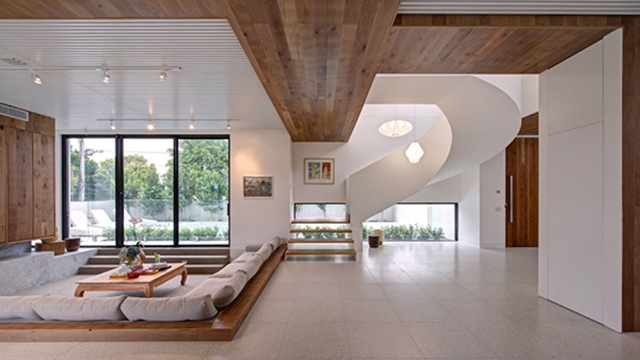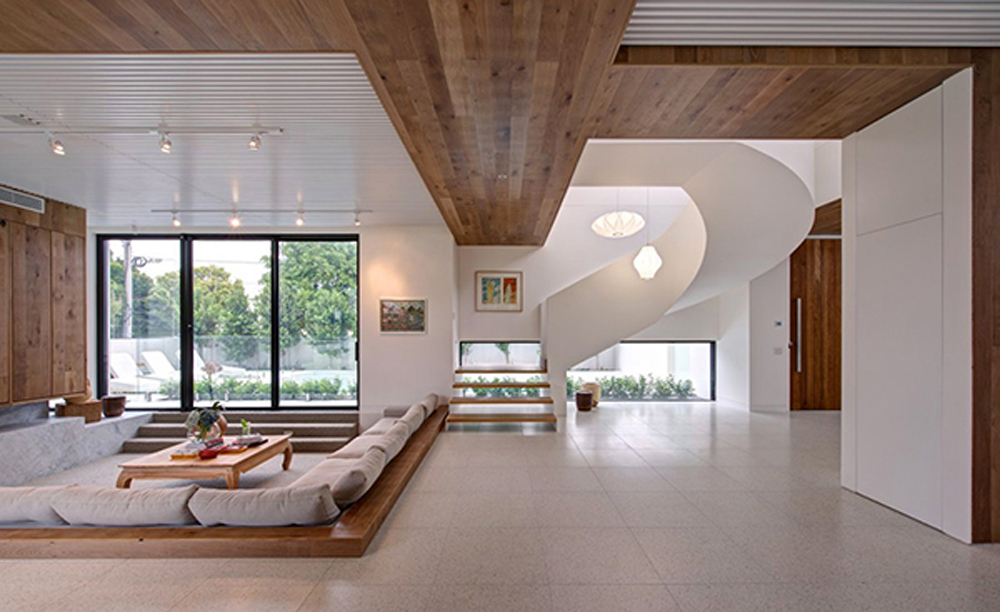
The Perfect Marriage: When Architecture Meets Interior Design
Ryan Flores -Architecture and interior design are two intertwined disciplines that perfectly complement each other, creating harmonious and functional spaces to cater to our everyday needs. From the grandeur of monumental structures to the cozy intimacy of our homes, the collaboration between architects and interior designers is a powerful duo that shapes the way we experience our surroundings.
When we think of architecture, we envision the captivating facades and awe-inspiring structures that define our cities. Architects, with their vision and technical expertise, transform abstract ideas into tangible forms, shaping the skyline with their innovative designs. Their creative prowess is not only limited to the exterior, but also extends into the very essence of a building’s purpose.
On the other hand, interior designers delve into the realms of aesthetics and functionality, ensuring that the spaces within these architectural marvels are as captivating as their exteriors. They meticulously curate the colors, textures, and furnishings to create an atmosphere that not only suits the needs of the inhabitants but also reflects their unique personalities.
When these two disciplines collaborate, a magical synergy is created – a perfect marriage of form and function. Architects and interior designers work hand in hand, seamlessly blending the structural elements of a building with the meticulous placement of furniture, art, and lighting fixtures. The result? Spaces that not only impress visually, but also provide comfort and functionality.
In this article, we will delve deeper into the fascinating world of architecture and interior design. We will explore the symbiotic relationship between these two disciplines, highlighting their dynamic interplay and the impact they have on our daily lives. From the timeless elegance of classical design to the bold experimentation of contemporary architecture, we will discover how the perfect fusion of architecture and interior design shapes the spaces we inhabit, leaving an indelible mark on our experiences.
So, join us on this journey as we explore the inseparable bond between architecture and interior design, and discover the remarkable ways in which they shape our built environment.
The Role of Architecture in Interior Design
Architecture plays a fundamental role in the world of interior design. It serves as the foundation upon which all interior elements are built, providing the framework for a harmonious living space. The integration of architecture and interior design is essential in creating cohesive and functional environments that meet the needs and desires of the occupants.
When it comes to designing the interior spaces of a building, architects take into consideration various factors such as the layout, structure, and overall aesthetic of the building. The architectural design sets the tone and establishes the basic structure that will guide the interior design process.
One of the key aspects of architecture in interior design is space planning. Architects carefully analyze the available space and determine how it can be maximized to ensure efficient and practical use. They consider factors such as circulation patterns, sight lines, and the relationship between different areas to create a well-balanced and comfortable environment.
Furthermore, architectural elements such as windows, doors, and walls significantly impact the interior design. These features not only define the overall style and character of a space but also influence the flow of natural light, ventilation, and privacy. By strategically placing windows and openings, architects can enhance the interior ambiance and create connections between indoor and outdoor spaces.
In conclusion, architecture plays a vital role in shaping interior design. It provides the structural framework and sets the stage for the creative exploration of materials, colors, textures, and furnishings within a space. The seamless integration of architecture and interior design promotes a harmonious and visually appealing environment that meets both functional and aesthetic requirements.
Creating Harmony: Integrating Architecture and Interior Design
Architecture and interior design are two interdependent disciplines that work in tandem to create harmonious living spaces. The successful integration of these fields can elevate the aesthetics and functionality of a building, resulting in a captivating and well-designed structure. When architecture and interior design are brought together seamlessly, the result is an extraordinary marriage of form and function.
The first step in creating harmony between architecture and interior design is to understand the fundamental principles that govern both disciplines. Architecture focuses on the structural aspects of a building, considering factors such as spatial layout, material selection, and functionality. On the other hand, interior design is concerned with enhancing the interior spaces, encompassing elements such as color schemes, furniture arrangement, and lighting design. It is by recognizing the importance of these distinct yet interrelated aspects that architects and interior designers can collaborate effectively.
The integration of architecture and interior design requires a holistic approach, where both professionals work closely to align their visions. By sharing ideas and understanding each other’s expertise, they can create a cohesive design that balances the exterior and interior elements. This collaboration allows for a seamless flow between the two disciplines, ensuring that the architecture enhances the interior design, and vice versa.
The key to a successful integration lies in the ability to strike a balance between aesthetics and functionality. While architecture establishes the overall structure of a building, interior design adds the finishing touches that bring it to life. The right selection of materials, colors, and textures can transform a space, creating an atmosphere that reflects the intended purpose and style. By carefully considering the architectural context, interior designers can leverage the building’s existing features to enhance the overall design, resulting in a harmonious and visually pleasing environment.
In conclusion, architecture and interior design are intertwined disciplines that rely on each other to create a well-designed and functional space. Through collaboration, understanding, and a shared vision, architects and interior designers can integrate their expertise to achieve a harmonious marriage between the two. The successful integration of these disciplines allows for the creation of captivating structures that inspire and delight those who experience them.
The Impact of Interior Design on Architectural Spaces
Interior design plays a crucial role in shaping and enhancing architectural spaces. By carefully selecting and arranging elements within a building, interior designers have the power to transform the way we experience and interact with a space. From color palettes and lighting to furniture choices and material selection, every decision made in interior design has a profound impact on the overall ambiance and functionality of a building.
One of the key aspects influenced by interior design is the atmosphere of a space. The color scheme, for instance, can evoke different emotions and set the mood for a particular room. Warm tones like reds and oranges can create a cozy and inviting environment, while cool blues and greens can promote a sense of calmness. Similarly, the use of natural light versus artificial lighting can drastically alter the feel of a space, with soft natural light creating an airy and peaceful atmosphere.
Interior design also greatly influences the functionality and practicality of architectural spaces. The placement and arrangement of furniture and fixtures can optimize the flow and usage of the area. For example, in an open-plan office, interior designers can strategically position workstations and collaborative spaces to encourage communication and productivity. In a residential setting, the layout of a kitchen can be designed to maximize efficiency and ease of use, taking into consideration factors such as the workspace triangle and storage solutions.

Additionally, interior design has the ability to enhance the overall aesthetic appeal of architectural spaces. The selection of materials, textures, and finishes can contribute to the visual impact of a building, creating a cohesive and harmonious design. Whether it’s a contemporary minimalist style or a traditional and ornate theme, the interior design choices can reinforce the architectural language and convey a specific design intent.
In conclusion, interior design plays a fundamental role in shaping architectural spaces. Through the careful consideration of elements such as color, lighting, furniture, and materials, interior designers have the power to create functional, aesthetically pleasing, and emotionally engaging environments within buildings. The perfect marriage of architecture and interior design results in spaces that not only fulfill their intended purposes but also provide a memorable and delightful experience for their occupants.
You may also like
Archives
- December 2025
- November 2025
- October 2025
- September 2025
- August 2025
- July 2025
- June 2025
- May 2025
- April 2025
- March 2025
- February 2025
- January 2025
- December 2024
- March 2024
- February 2024
- January 2024
- December 2023
- November 2023
- October 2023
- September 2023
- August 2023
- July 2023
- June 2023
- May 2023
- April 2023
- March 2023
- February 2023
- January 2023
- December 2022
- November 2022
- October 2022
- September 2022
- August 2022
- July 2022
- June 2022
- May 2022
- April 2022
- March 2022
- February 2022
- January 2022